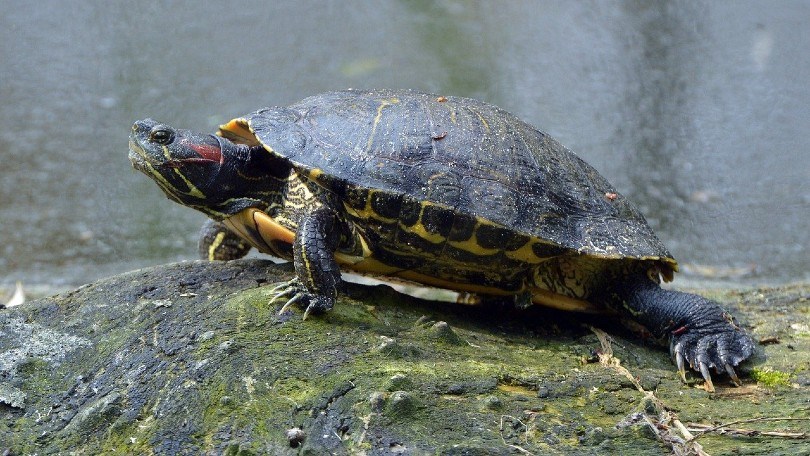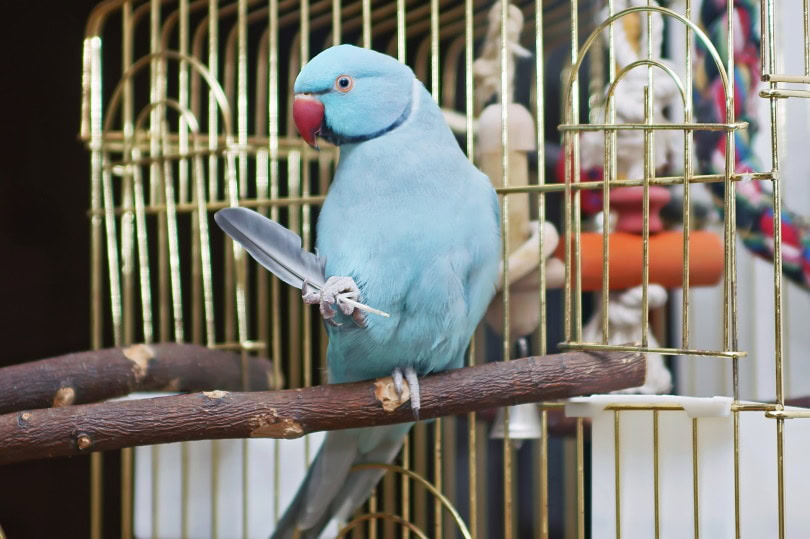Even though turtles spend a lot of time underwater, they cannot breathe underwater. Still, they have evolved so that they can hold their breath for long periods, allowing them to remain underwater much longer than us.
The exact time turtles can hold their breath underwater depends on their type and age. Some turtles can only spend minutes underwater, whereas others have been documented to stay underwater for hours.
To find out more about how long turtles can hold their breath, keep reading. This article takes a close look at how long turtles can stay underwater based on their type and scenario.

Turtle Behavior
Before looking at the exact times, we must discuss breathing and swimming. Although turtles spend a lot of time underwater, they are primarily land animals. If they remain underwater constantly, they will die.
Turtles can stay underwater for longer periods of time than humans. This ability likely evolved because the water provides a lot of food and hiding places for these prey animals. Plus, turtles can move much faster underwater, allowing them to escape their predators.

Why Turtles Can Hold Their Breath Underwater for So Long
There are three primary reasons why turtles can hold their breath for so long.
- First, turtles have a very different respiratory, skeletal, and muscle system than humans, which allows them to breathe more easily.
- Some species, namely freshwater turtles, have the ability to absorb oxygen through their cloaca, which is an all-purpose cavity found in many vertebrates and invertebrates. With their cloaca, they can absorb the oxygen they need, and they don’t have to technically breathe for their oxygen.
- Finally, the third reason turtles can hold their breath for so long is that they have external nares above their mouth. Since the nares are above their mouth, the turtles don’t actually have to come above the surface to breathe. They come up to it and expose their nares to the air. The turtle is breathing, though it may appear like it is holding its breath.
How Long Can Turtles Hold Their Breath?
Now, let’s talk about how long turtles can hold their breath. The length depends on the turtle’s age, variety, and health conditions. Generally speaking, babies and elderly turtles cannot hold their breath as long as healthy mature turtles. Additionally, sea turtles are known to hold their breath much longer than freshwater varieties.
The turtle’s activity and resting also impact how long it can hold its breath. Turtles hold their breath longer when sleeping underwater, moving underwater, or hibernating underwater.
Holding Breath While Sleeping Underwater
Whenever a turtle or any other animal is sleeping, the metabolic rate slows. As a result, the turtle needs to breathe less frequently whenever it is sleeping. If your freshwater turtle sleeps underwater, it can hold its breath for over an hour.
Sea turtles can stay underwater even longer when they’re sleeping. Most sea turtles can sleep underwater for about 4 to 7 hours without needing to come up for air.
Holding Breath While Swimming or Moving Underwater
When the turtle moves around frequently, it must come up for air more often. Some species can only hold their breath for about 30 minutes, whereas many freshwater varieties can hold their breath for up to 45 minutes.
Sea turtles can hold their breath for much longer. The record for a leatherback sea turtle holding its breath underwater is a little over 7 hours.
When given the choice, most turtles will not press their limits. Instead, they prefer to dive, swim underwater for five minutes, and then come up for air for a few seconds. This allows the turtle to breathe and swim more leisurely, even though it can hold its breath for much longer.
Holding Breath While Hibernating
Many people do not know this, but turtles hibernate, much like bears and other animals. Some turtles hibernate underwater, especially turtles living in northern areas. During the hibernation process, the metabolic rate drops, and the turtle requires less food and oxygen to survive.
Turtles can hibernate underwater for months at a time because of their cloaca. As we learned above, the cloaca can absorb oxygen, allowing turtles to remain underwater for more extended periods. Cloacas generally act as pumps; they expel the water while absorbing the oxygen.
The exact time turtles can spend in hibernation depends on their type, though most can hibernate underwater for a couple of months at a time.
Why Can Sea Turtles Stay Underwater Longer Than Other Turtles?
Scientists have taken time to observe sea turtles’ ability to hold their breath underwater. Like every other turtle on the planet, sea turtles cannot breathe underwater and need air to survive, but they thrive in treacherous waters.
The main reason sea turtles can stay underwater for longer than other turtle varieties is that their biology differs. Sea turtles have evolved so that their metabolic rate slows whenever they hold their breath, enabling them to conserve energy and stay underwater for a long time.
Like freshwater turtles, sea turtles don’t try to press themselves too much. Most turtles will stay underwater for 5 to 10 minutes before coming up for air for a few seconds. If they are stressed or being more active, they must come up for air more frequently.
How Long Can My Turtle Stay Underwater?
Most freshwater varieties kept as pets can hold their breath for 30 to 45 minutes while in motion. Still, most turtles will not stay underwater for this length of time unless they have to.

Conclusion
The exact time a turtle can hold its breath depends on its age and species. The average time ranges between 30 and 45 minutes while in motion or 1 hour while sleeping. Of course, hibernating turtles can last longer underwater, thanks to their cloaca.
If you notice your turtle is underwater for a long time, it is either hibernating or has drowned. Even though turtles are skilled swimmers, drowning is possible since they require air to breathe. Luckily, your turtle will likely know its limits and come up for air more frequently than it needs to, and you don’t have to worry about it drowning if you provide it with the proper habitat.
- You may also like: How Long Can Turtles Go Without Water?
Featured Image Credit: Pexels, Pixabay
Contents
- Turtle Behavior
- Why Turtles Can Hold Their Breath Underwater for So Long
- How Long Can Turtles Hold Their Breath?
- Holding Breath While Sleeping Underwater
- Holding Breath While Swimming or Moving Underwater
- Holding Breath While Hibernating
- Why Can Sea Turtles Stay Underwater Longer Than Other Turtles?
- How Long Can My Turtle Stay Underwater?
- Conclusion










